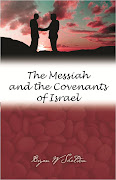Jesus in the Temple (Continued)
 |
| The Temple Courts |
When Mary and Joseph realised Jesus was missing from the group of returning pilgrims, they retraced their steps back to Jerusalem and made their way to the Temple where they found Him. When they chastised Him for remaining behind without their knowledge, His response was unexpected. He said, “Why did you seek Me? Did you not know that I must be about My Father’s business?” (Luke 2:49) These are the first recorded words of the Saviour. It is the first indication that He was aware of His mission. It will be ‘His Father’s business’ that will occupy Him the rest of His life. We have confirmation of this in the many indicators given to us during His public ministry. He constantly spoke of the will of the Father. For example John 5:30: “… I do not seek My own will but the will of the Father who sent Me” and John 8.29,30 “The Father has not left Me alone, for I always do those things that please Him.” The staggering information is, of course, that the will of the Father, that is ‘the Father’s business’, involved His death on the cross, identified in such verses as John 10:17,18 “Therefore My Father loves Me, because I lay down My life that I may take it again. No one takes it from Me, but I lay it down of Myself. I have power to lay it down, and I have power to take it again. This command I have received from My Father”. Jesus fully accepted, nay fully embraced, His place in the eternal plan of redemption. “Shall I not drink the cup which My Father has given Me?” (John 18:11)
So Jesus, having attended His first Passover after becoming a son of the commandment, saw the lamb slain, questioned the Temple authorities regarding the sacrificial system, and declared He was “about His Father’s business” (His first recorded words). At His last Passover, He was the Lamb slain. He laid down His life as commanded by His Father and so, in respect of His Father’s business, He could declare to men, angels and demons – “it is finished” (John 19:34) (His last recorded words before He died).
Next Time: Jesus in the Wilderness



